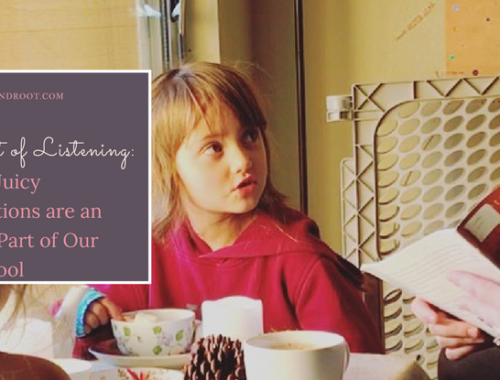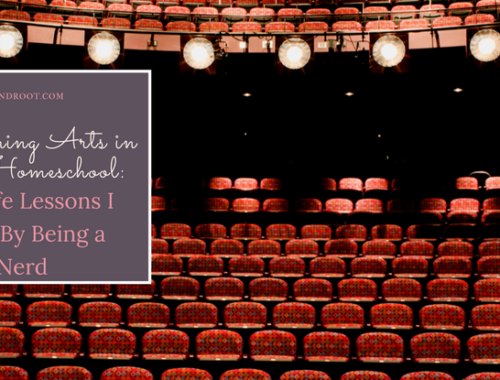This post may contain affiliate links. Please read my disclosure statement for more information.
I’m not really sure which aspect of the Brave Writer lifestyle I fell in love with first. Was it our first poetry teatimes, calling out Shel Silverstein poems over the roar of the jungle rain? Or the permission to devour audiobook after audiobook as we drive through forests and fields together, and call it school? Or was it the idea that the excited words of my tiny daughters as they told me stories were the very first seeds of their writing selves, and that I should catch them on a page like a teacup catching rain, so they could see the significance of their ideas? Or maybe it was the joy of discovering that we could bypass workbooks and instead languish on the beautiful words of the literature we loved together. Or spend a day wandering an art museum with a stack of postcards and learn more than we could in a month of lessons at a desk.
Whatever it was, it’s got us hooked, and if you’ve been reading my blog for some time, you know I’m not shy about saying so. But many of you have asked me what it actually looks like to integrate the Brave Writer lifestyle in our homeschool week. Well, every week is different and that’s what I love about it. But there are elements that we incorporate regularly–some daily, some weekly, some when inspiration strikes.
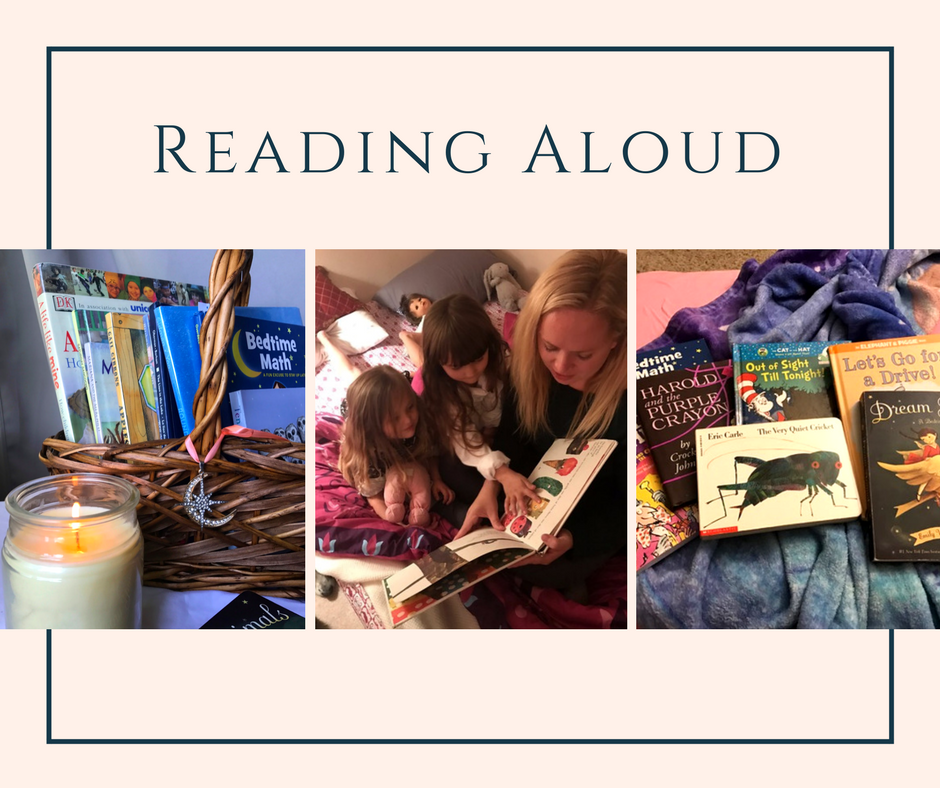
Reading Aloud
Reading aloud is a daily affair. It’s built into the rhythm of our mornings and nights together. We snuggle on the couch to read from our morning basket–a mix of fiction and non-fiction, from nature lore and Shakespeare to biography and poetry to Louisa May Alcott and Laura Ingalls Wilder. We also do a “bedtime basket.” This basket always starts with Life of Fred, then my oldest reads from Frog and Toad or Little Bear (or something similar) and we end with selections from the library. Reading aloud is the essential foundation of the Brave Writer lifestyle, and the easiest to implement. Yes, audiobooks count, which we love because we do put in a lot of miles. We’ve listened to hundreds of hours of audiobooks on the road–from Pippi to Jo, from Anne to Matilda, and the entire Ramona series at least four times.
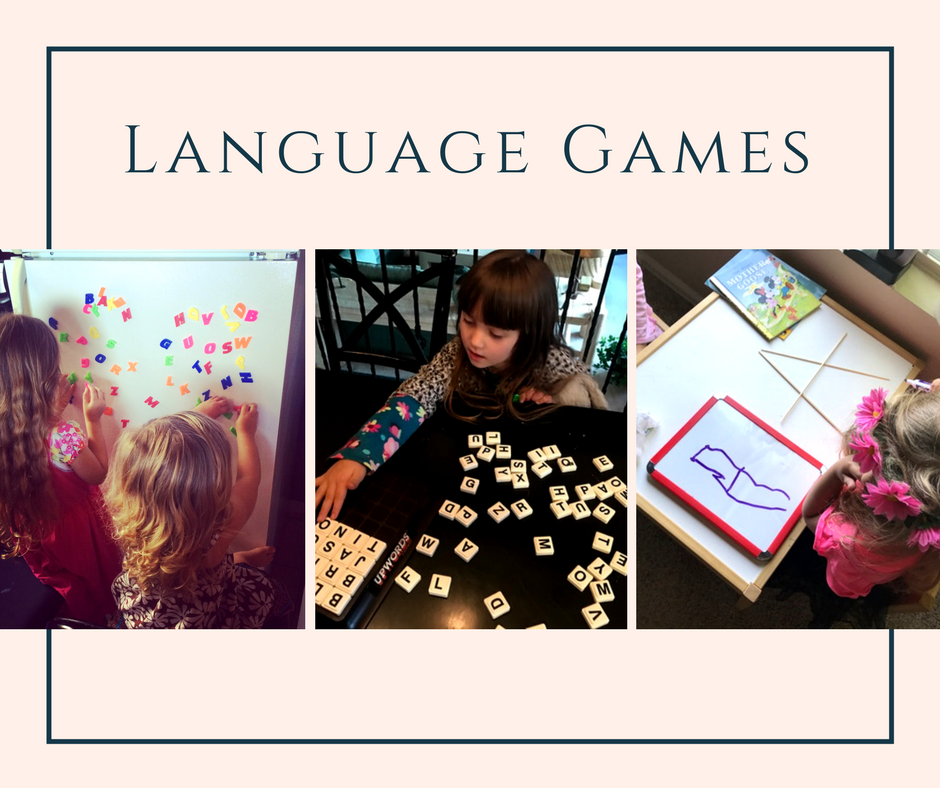
Language Games
I love gameschooling, and look for every opportunity to insert games into our homeschool life. We play many games that center around language, as well as math, geography, herbs and plants, nature, and science. The current favorites are Bananagrams, Jr. and Wildcraft. Games happen about twice a week, after morning basket.
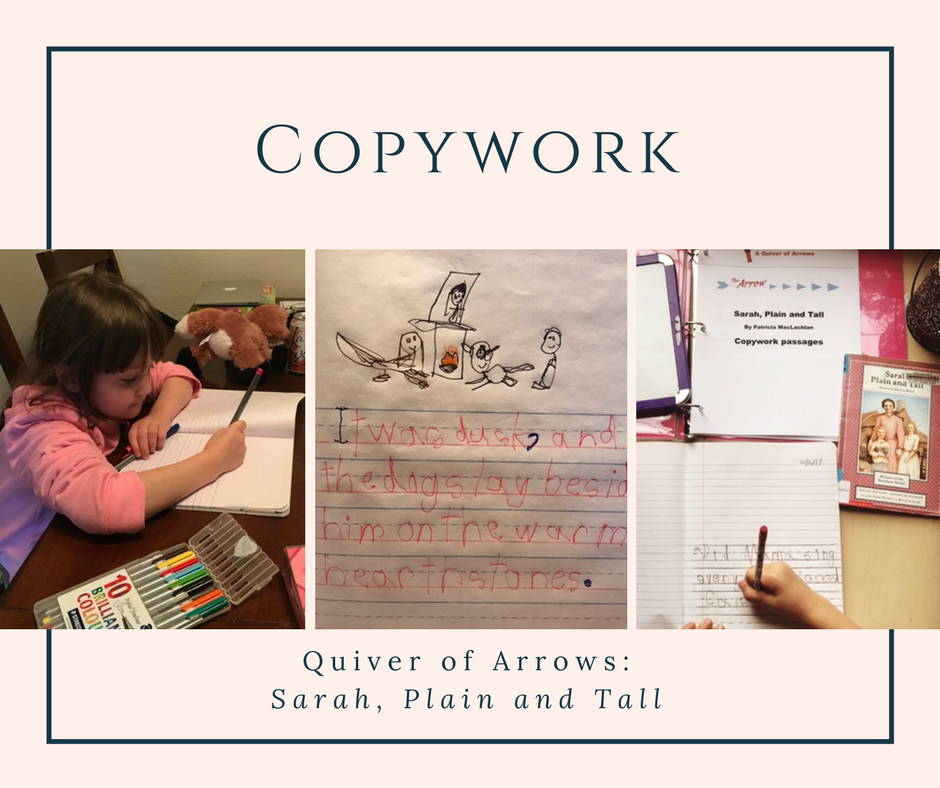
Copywork, Dictation, and Literary Elements
Like most people who have studied Charlotte Mason, I truly believe that copywork and dictation are incredibly effective ways to teach grammar, writing structure, handwriting, spelling, literary elements, and more. But the Brave Writer curriculum we use, Quiver of Arrows, takes this one step further by using beautiful and inspiring works of literature as the material for it. For example, we are nearly finished with the Quiver issue for Sarah, Plain and Tall. We’ve learned about the structure of letter-writing and the power of descriptive color words, and practiced printing beautifully, all while enjoying a lovely story together. Next week, we’re going to have a letter-writing party to celebrate the end of this issue. Each one takes approximately four weeks (five if we add a party or special activity at the end.) Typically, our copywork selection takes one to two days per week, and our dictation takes one day. The writing project, which investigates a specific literary element, takes an additional day on the fourth week only.

Freewriting
The Brave Writer lifestyle leaves LOTS of room for freewriting, and encourages ample doses of it. My oldest daughter is naturally drawn to writing, and (like her mama) can never get her fill of it. So I give her what she needs–boxes FULL of blank books that I stapled together and plenty of pencils–and get out of her way. My youngest, only four years old, enjoys mark-making and is happy to tell me what she “wrote.” Now that she is learning her letters with our Blossom and Root Early Years curriculum, she’ll proudly fill pages with M’s and B’s. We freewrite “formally” at least once a week, but most nights, I’ll find Blake sprawled across her bed penning furiously. I am really excited to do Julie Bogart’s “7 Day Writing Blitz” in February. This is a free program you can sign up for by clicking here. This is a great way to “peek” into what Brave Writer is all about.
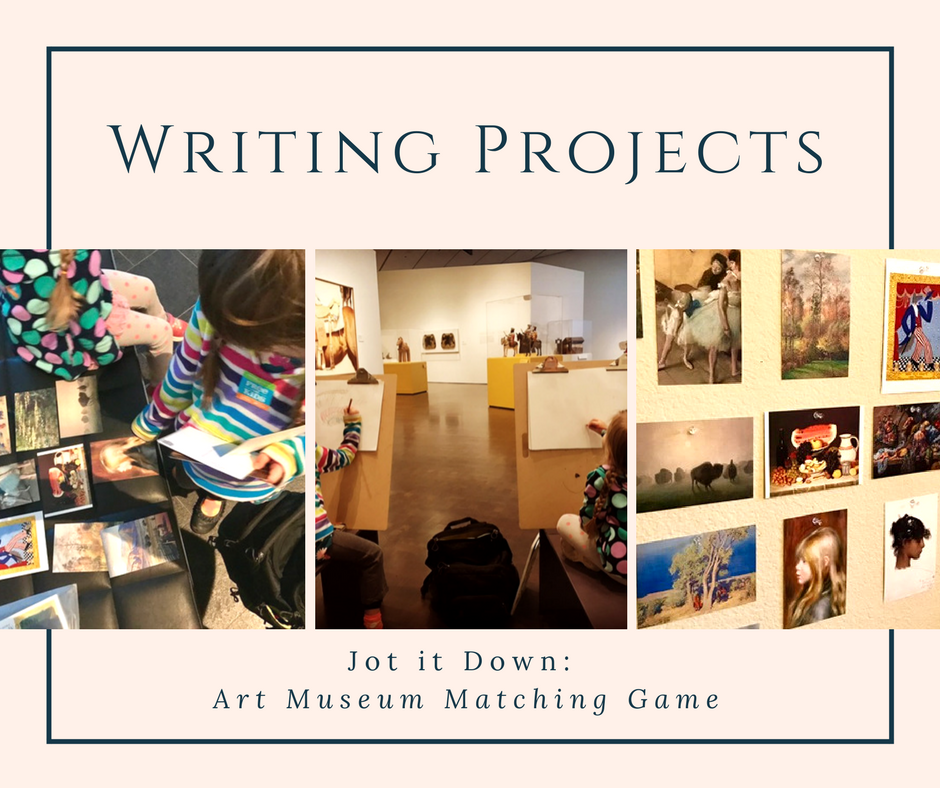
Writing Projects with Jot It Down
I remember when I first ordered Jot It Down, our writing curriculum from Brave Writer. I saw the ten writing projects and thought “oh no, this will only get us through one year.” I laugh now to think of that. 🙂 The beauty of Jot It Down, and the other writing programs from Brave Writer, is that they supply an endless framework for rich, inviting projects for you and your child. We are now in our second year of Jot It Down projects, with no sign of slowing down. We’ve made books of fairy tales, books about our favorite animals and planets, spent hours and hours in art museums, made a poster about isopods, and created a photo album of our favorite memories with our family members. We usually complete one project a month, more if Blake is particularly inspired.
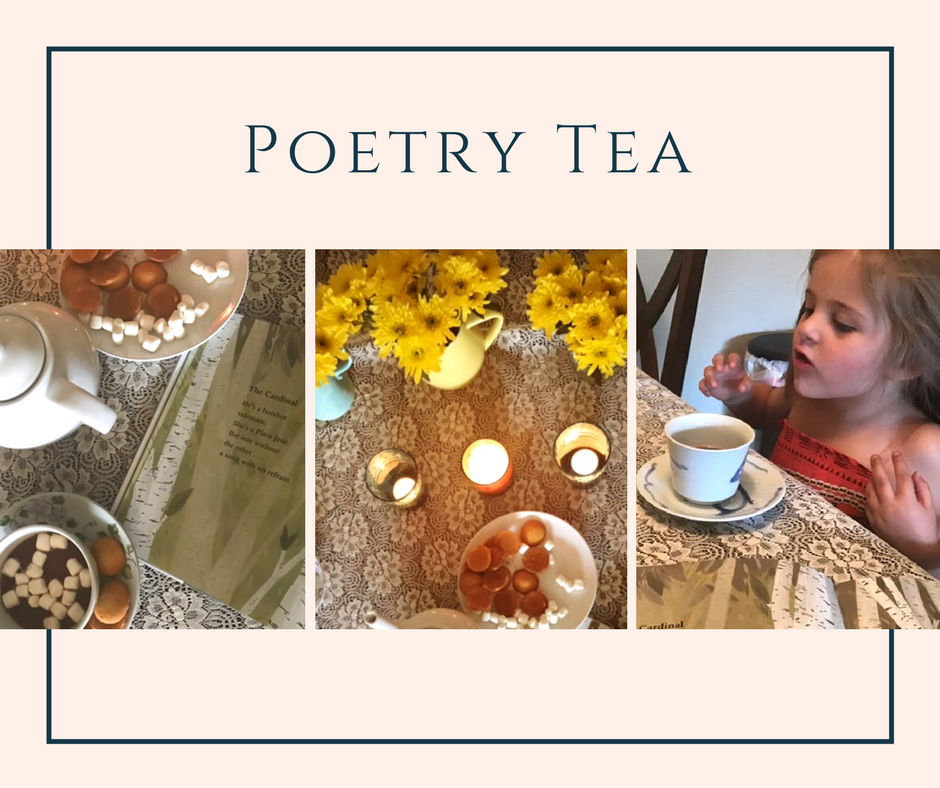
Poetry Tea
Poetry teatimes were my first introduction to Brave Writer. We embraced this weekly tradition back when we lived on Maui. Since then, we’ve adapted it to fit our mood and the season at hand. All this past summer, our poetry teas were held outdoors, picnic-style on the side of many a Rocky Mountain hiking trail. Last fall, I took some pocket change to our local second-hand store and came home with a delightfully eclectic mix of teacups and saucers, tablecloths and jars for flowers. We try to do a poetry tea every week, and have fun adding themes or surprises when we feel inspired. For instance, we had a “nutcracker” tea party this past December, at night–by Christmas light.
In all honesty, we really have poetry hot cocoas. I’ve tried about ten different kinds of tea with my girls and none have been winners with them yet. And sometimes, they aren’t poetry hot cocoas at all, but “bird guide” hot cocoas or “one more chapter of Little Women pleeeease” hot cocoas. But still.
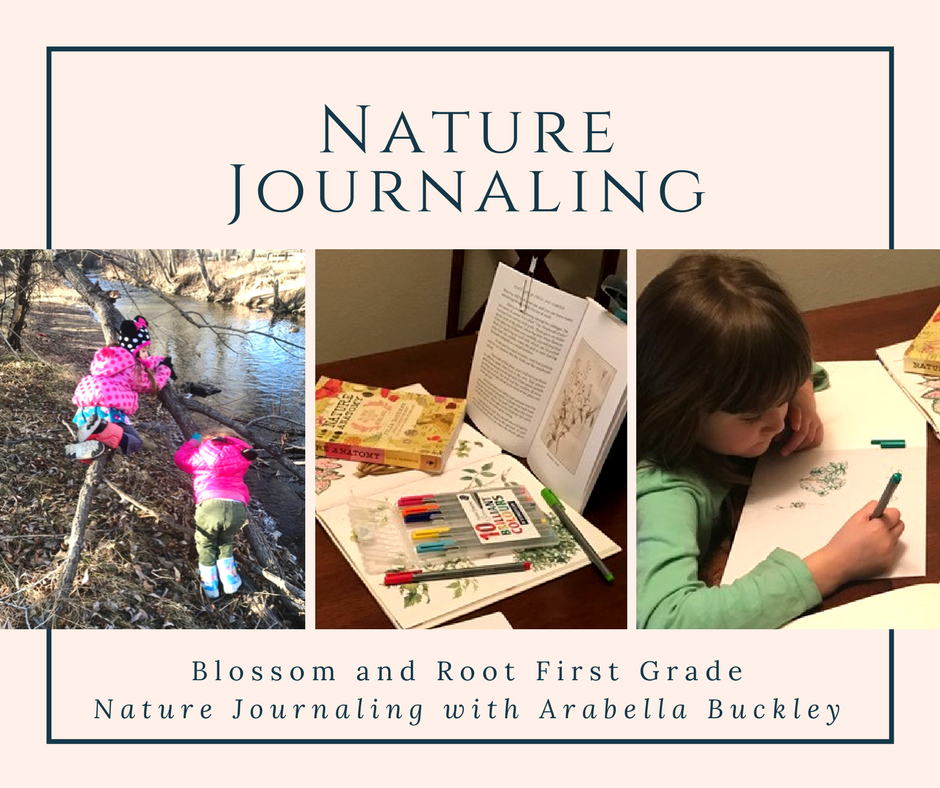
Nature Journaling
Being a nature-based homeschool, nature journaling was already a part of our homeschool lives. But Brave Writer helped me to understand that our weekly scribbles and sketches also counted as writing. As we’ve worked our way through Blossom and Root Early Years, Kindergarten, and now First Grade, we’ve started adding more descriptions to our sketches. The girls will tell me what they noticed and I will dictate their words next to their drawings. This has had a profound effect on their ability to remember things they’ve seen outdoors. Just the other day, Blake said, “mama, this is a ponderosa. I remember because I wrote that the bark smells like candy!”
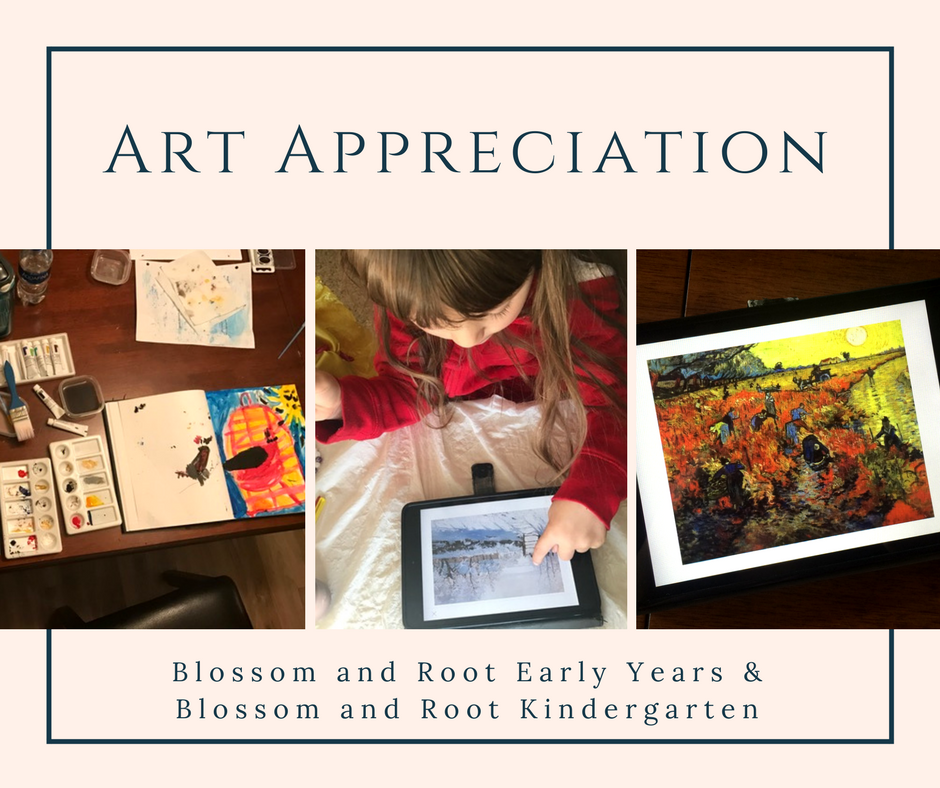
Art Appreciation
Art appreciation is a foundational part of the Brave Writer lifestyle. We do one picture study a week, and at least one art project. These are integrated in the Blossom and Root curriculum. For example, a few weeks ago, we studied The Old Guitarist by Pablo Picasso for picture study, and then made our own free paintings in shades of blue. We also love to do the art museum projects from Jot It Down whenever we get a chance.
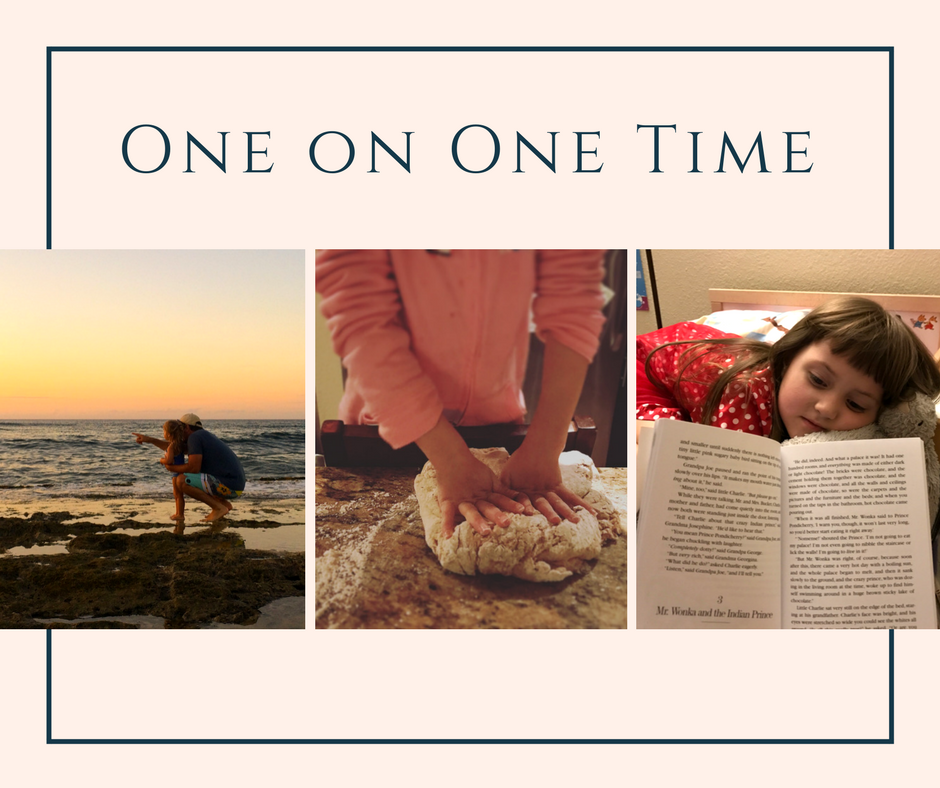
One on One Time
My husband and I try really hard to find opportunities to spend one-on-one time with our daughters. Julie Bogart of Brave Writer often talks about “big, juicy conversations” and these times together are often when the best ones happen. This is especially true of our youngest daughter. She can be a bit quiet in a group, but alone, she blooms into conversation, never failing to stun me with her insights and stories. During one-on-one time, Blake likes to bake bread, snuggle while watching a movie, or do puzzles. Brice prefers outside play, a visit to the playground, or simply a walk around the neighborhood. I learn so much about them when we have alone time together, and am always humbled by their willingness to share their deepest wishes and most important thoughts with me.
Freedom to Change, Grow, and Learn
Julie Bogart and the Brave Writer lifestyle have had a profound impact on our homeschool life, but it’s important to note that this lifestyle looks a little different for every family that participates in it. Most of the questions I get about it revolve around structure. “I don’t really understand which lessons to do on which days.” “How to I make a schedule for this every week? There’s so many pieces!” But Brave Writer isn’t really about plodding along with a strict schedule. And it’s not about “doing” Brave Writer the same way that other families are doing it. It’s about embracing the unique magic of your homeschool.
In a recent blog post, Julie said
Do you know what I feel sometimes when I’m in the homeschool context? Shackles. There is this unwitting need to lock down our homeschool experience under some “rules,” some system that somebody else set up for us…I wish to see people resisting the temptation to define what homeschool should be for another person. Freedom to change, grow, and learn. That’s number one.
To my quietly rebellious little heart, these words were absolute music. I admit it took me a long time to finally, wildly, embrace what the Brave Writer lifestyle meant for us. I kept trying to find that one blogger or Instagram account that could show us what it was “supposed to look like.” Last fall, something snapped into place. I feel like my inner child orchestrated it, honestly, because Brave Writer, our version of it anyway, is really bringing to life the education she craved and sought. I would have been so thrilled to copy beautiful phrases from my favorite books instead of random, redundant, meaningless phrases from our workbooks. I would have loved my teachers to occasionally stop their feedback at, “I love your creative approach to the writing topic” and not add, “Please note all of the (dozens of) red circles where you need to print neater and watch your spelling.” I treasured the rare teachers I had in public school that understood that reading Wuthering Heights and then watching two different movie versions, and having juicy conversations about all of them was indeed a richer education than writing a dry term paper to rehash the plot line.
It’s the idea that theatre and art and movies and games and nature walks are all platforms for language learning–real language learning–and should be embraced as earnestly as any other homeschool task. And brownies. Always add brownies. 🙂
Click on the Links Below For More Information on the Brave Writer Products We Use:
Click here to learn more about Quiver of Arrows
Click here to learn more about Jot It Down
Click here to visit the Poetry Teatime site
Get Your FREE Trial Issue of Book Seeds By Blossom & Root!

This FREE issue, inspired by the book The Three Sunflowers by Janet Lucy, includes two weeks of activities including nature study, STEAM, art project, recipe, and exploring language and poetry. Suitable for ages 3 - 8. Grab yours today!


